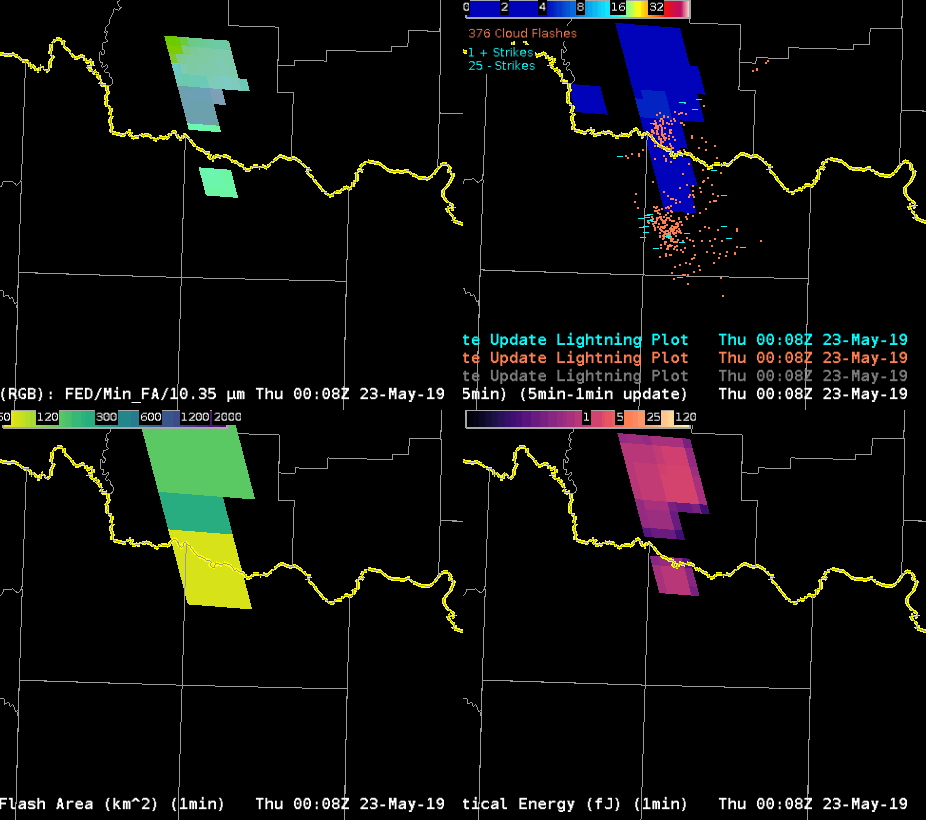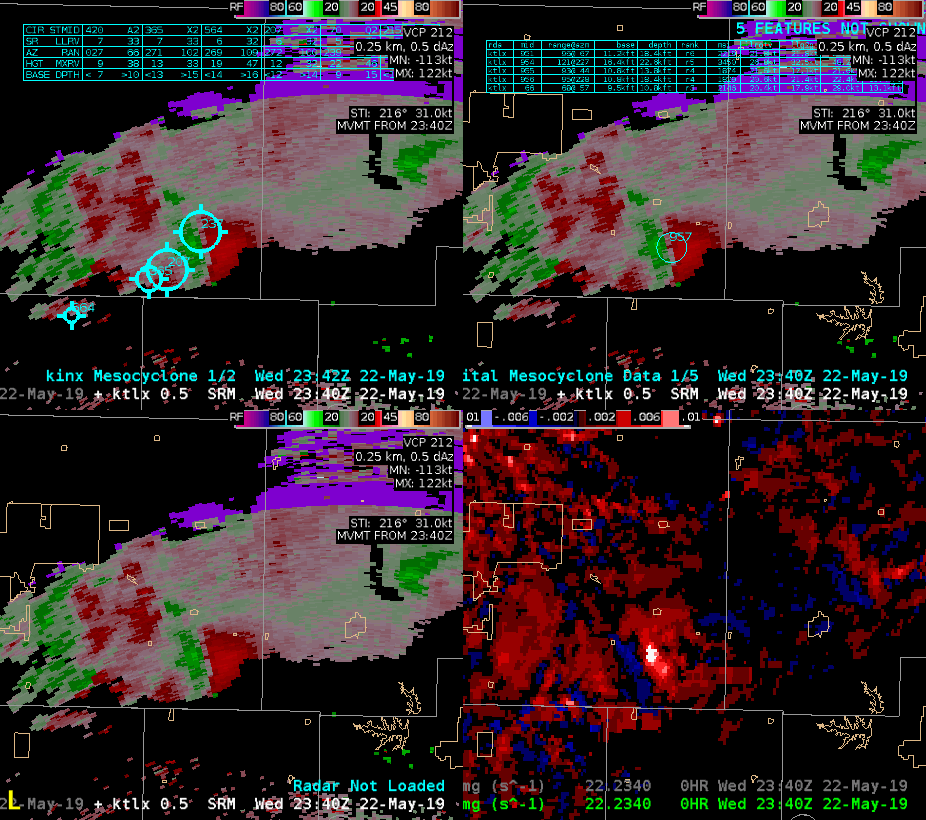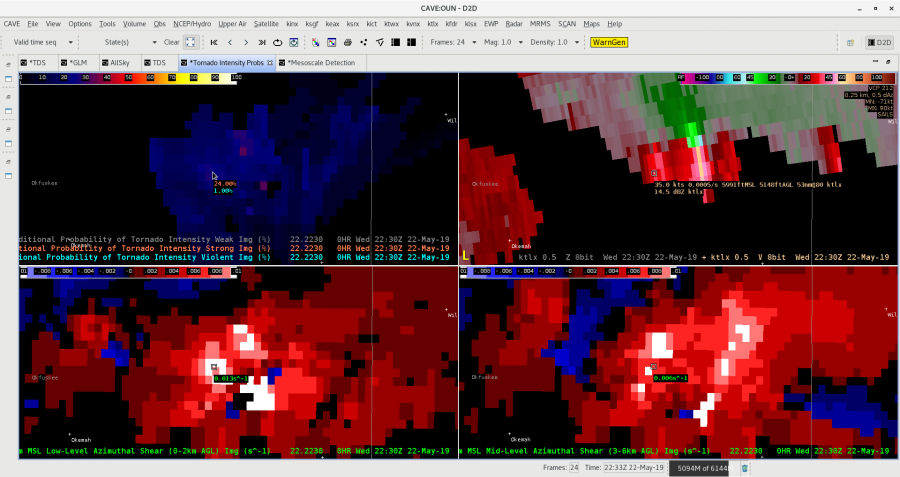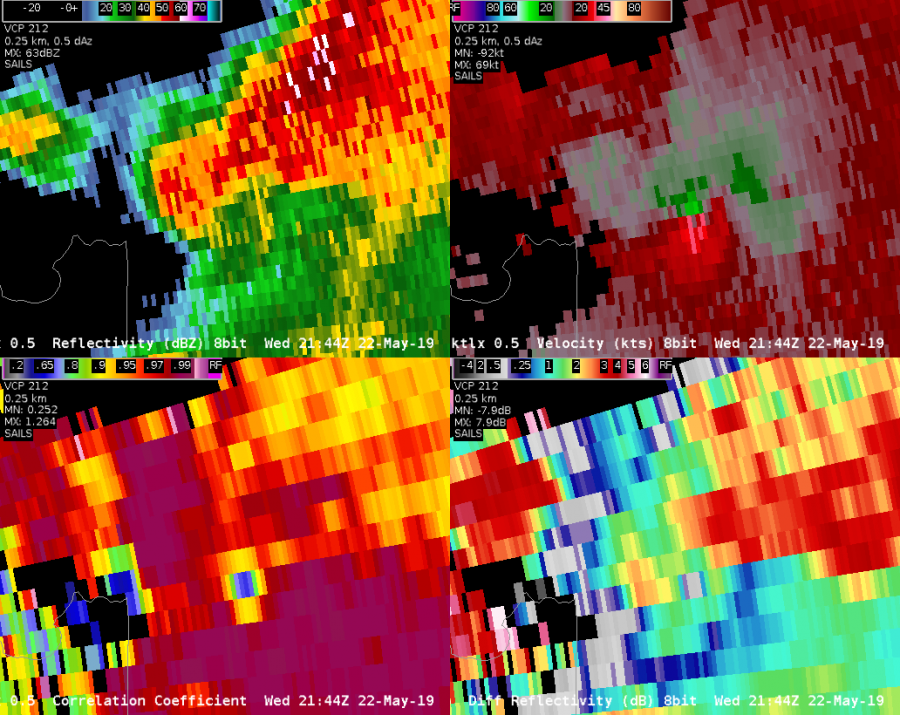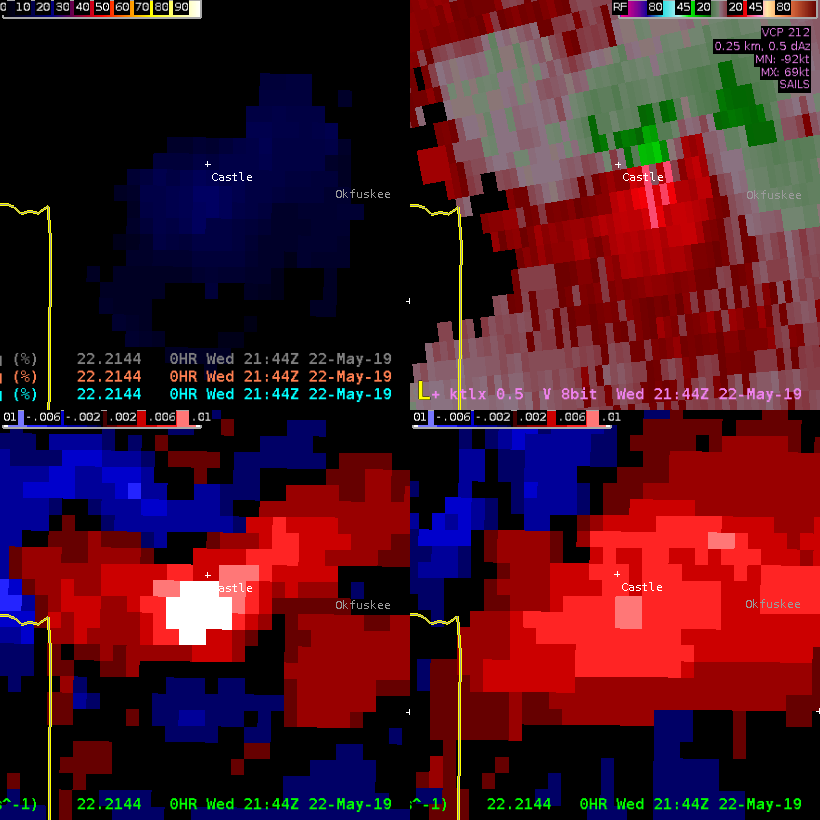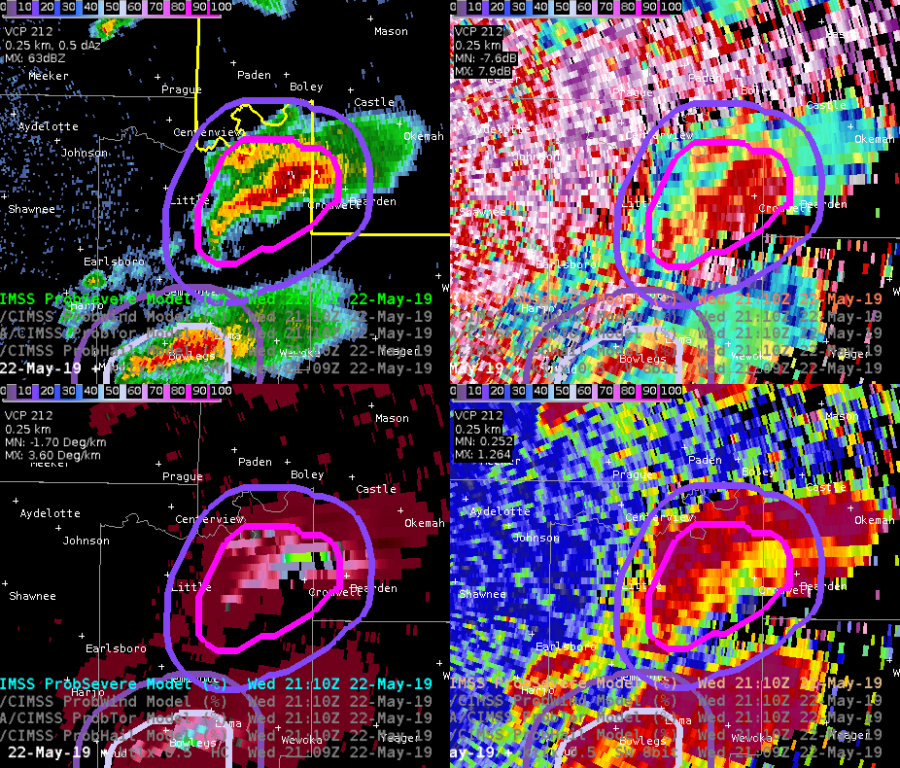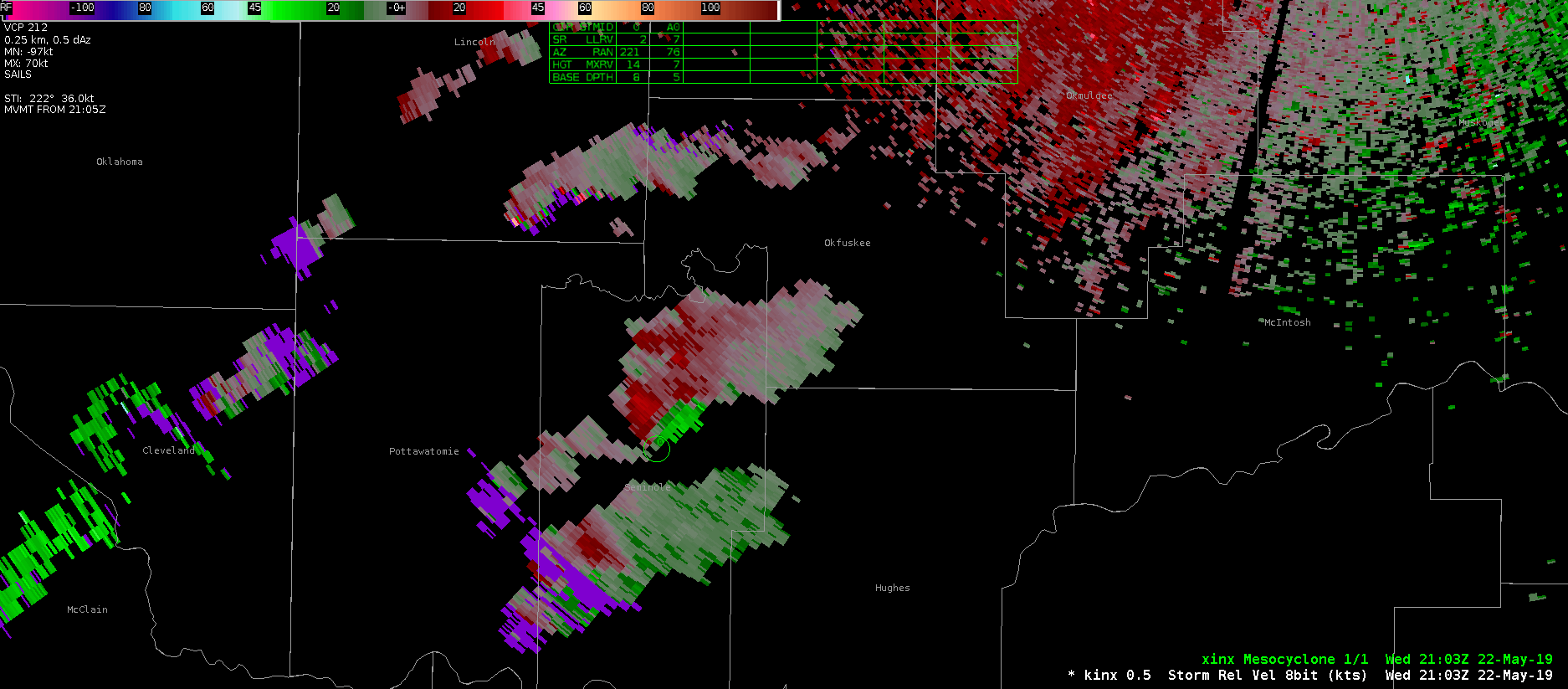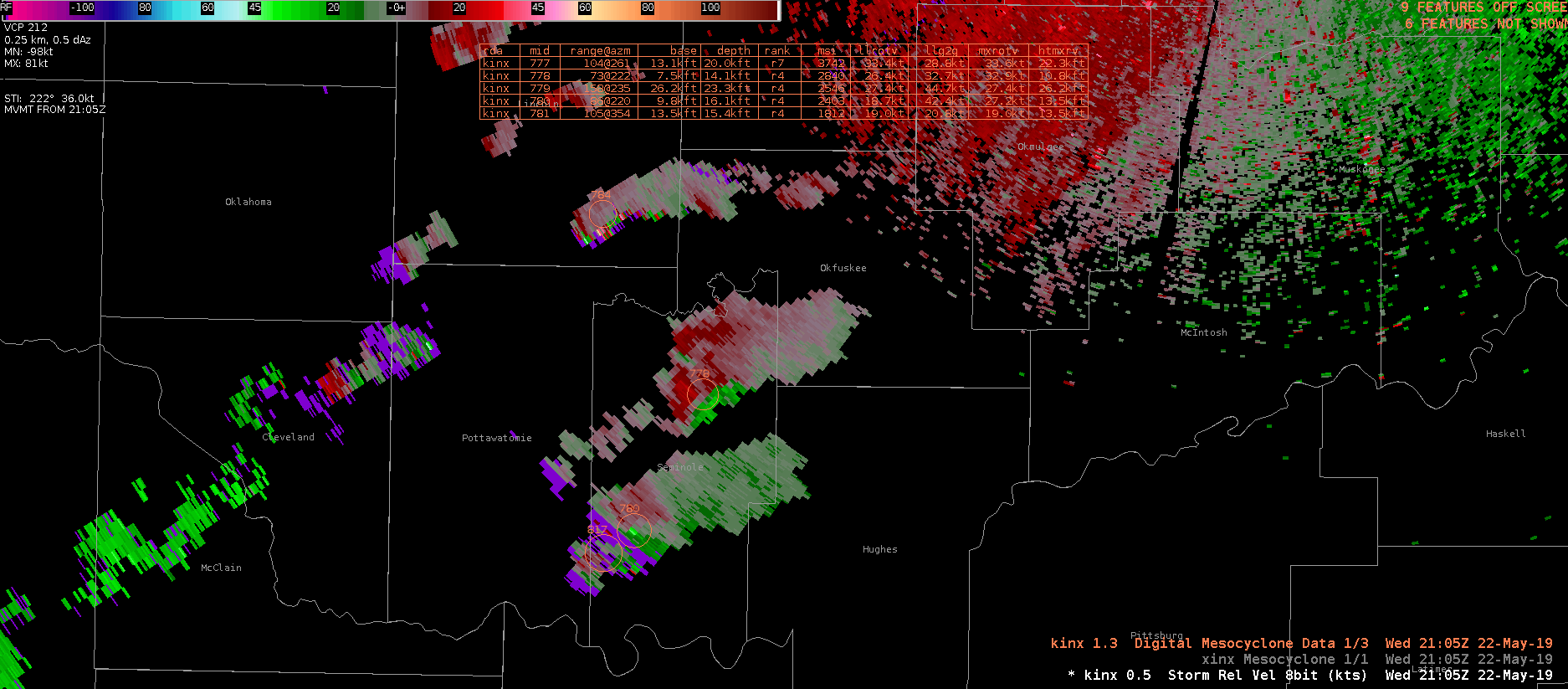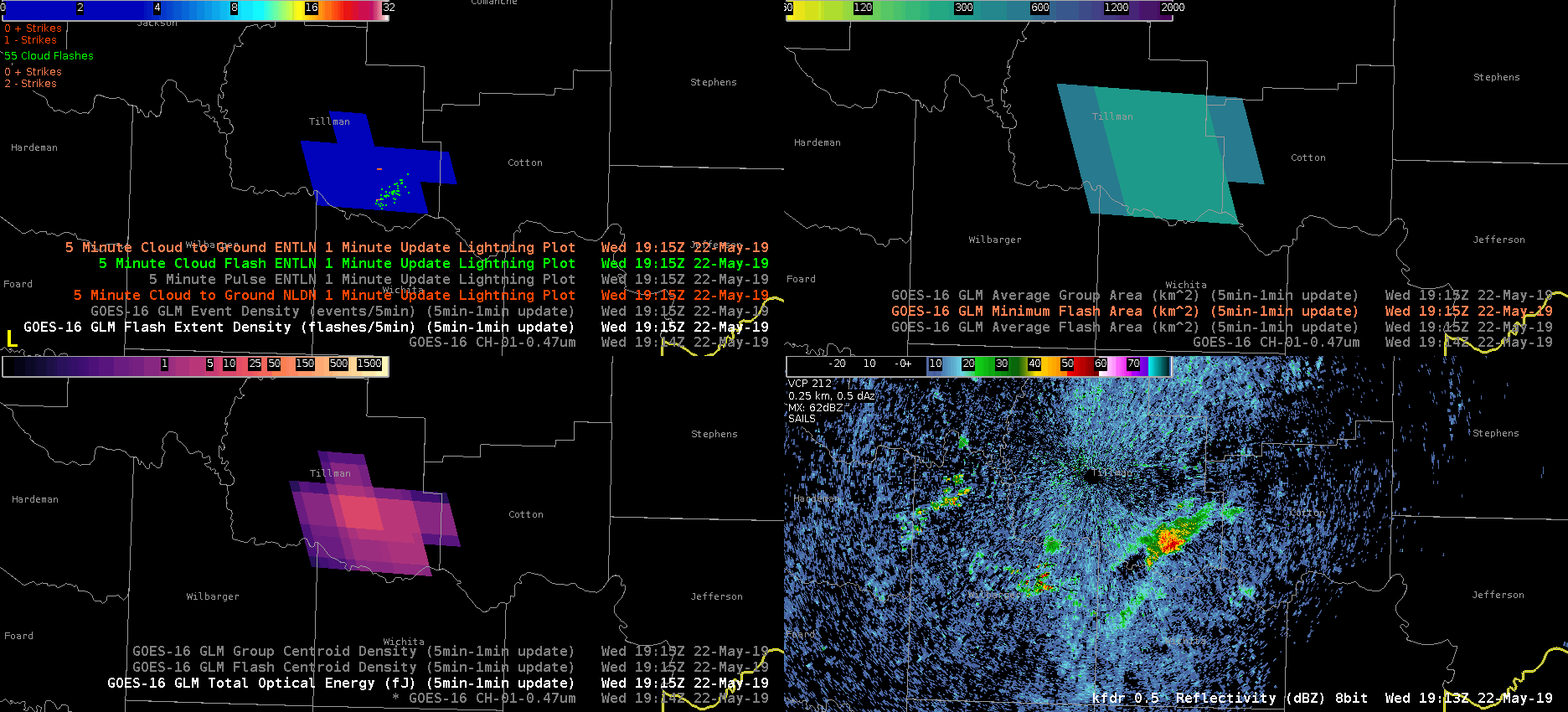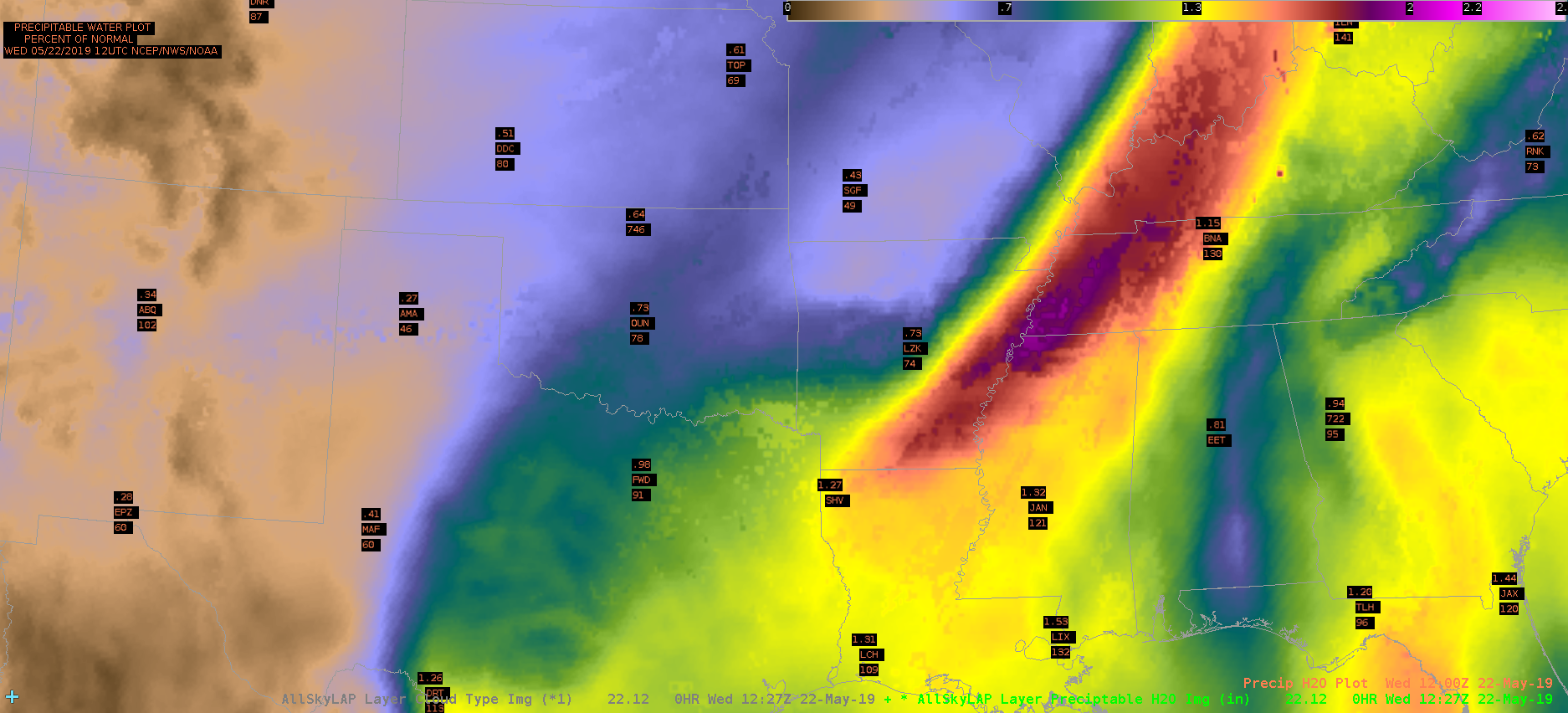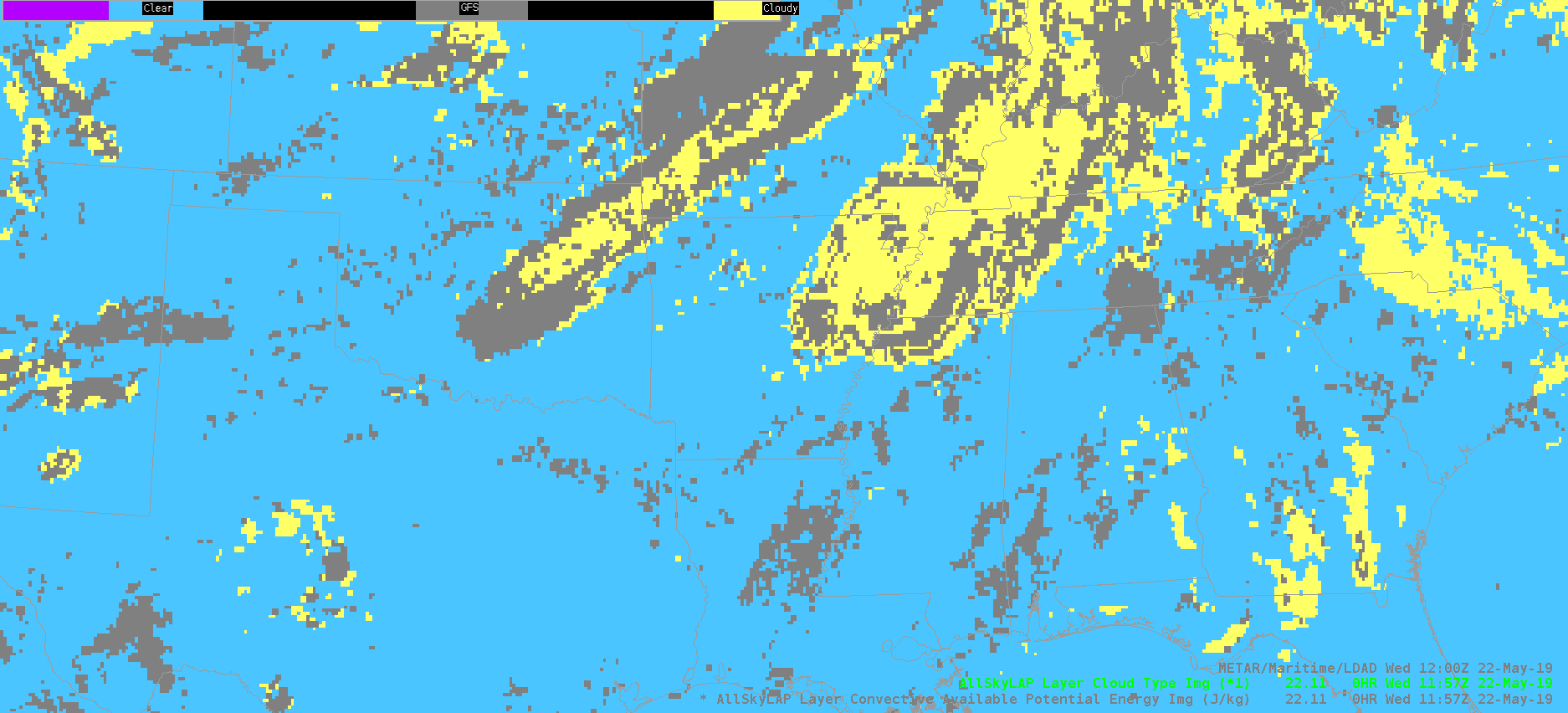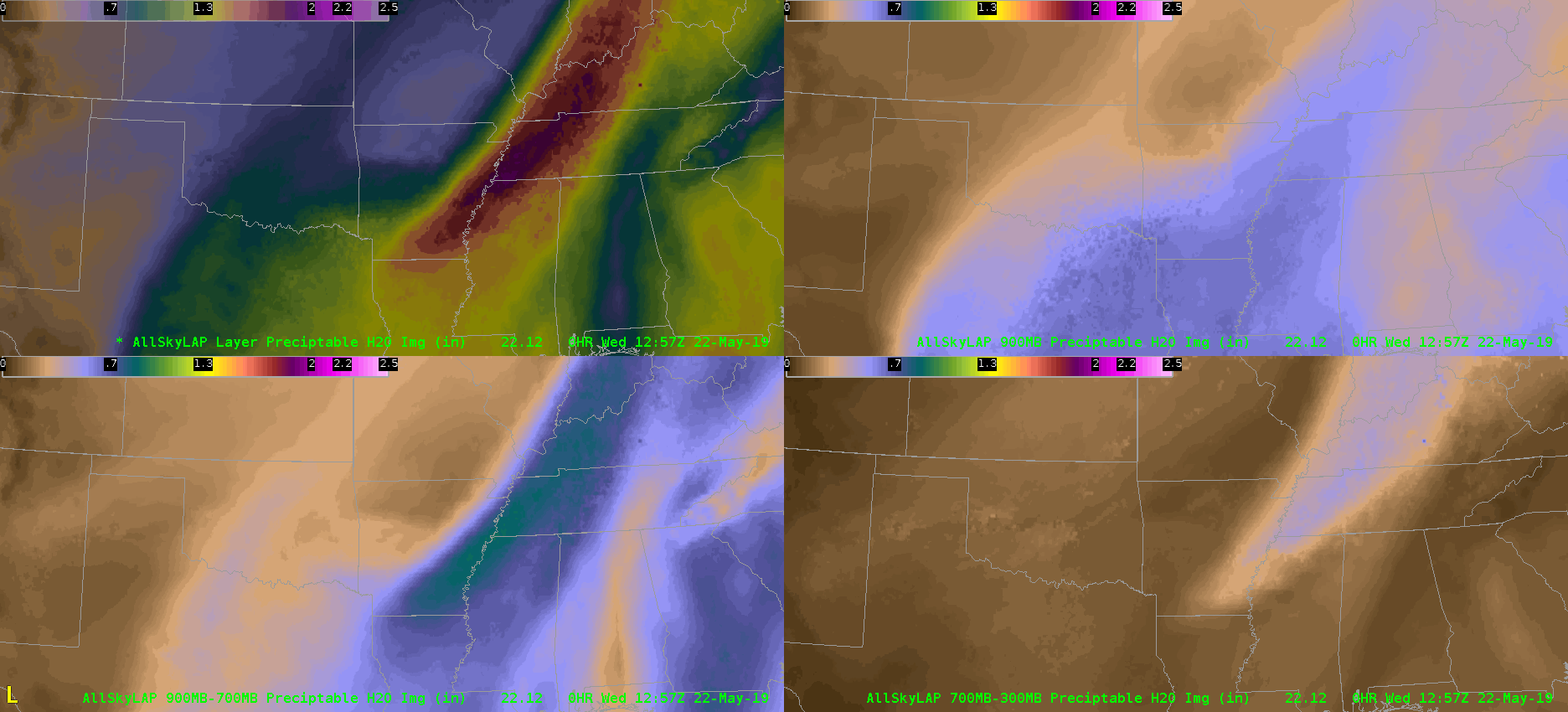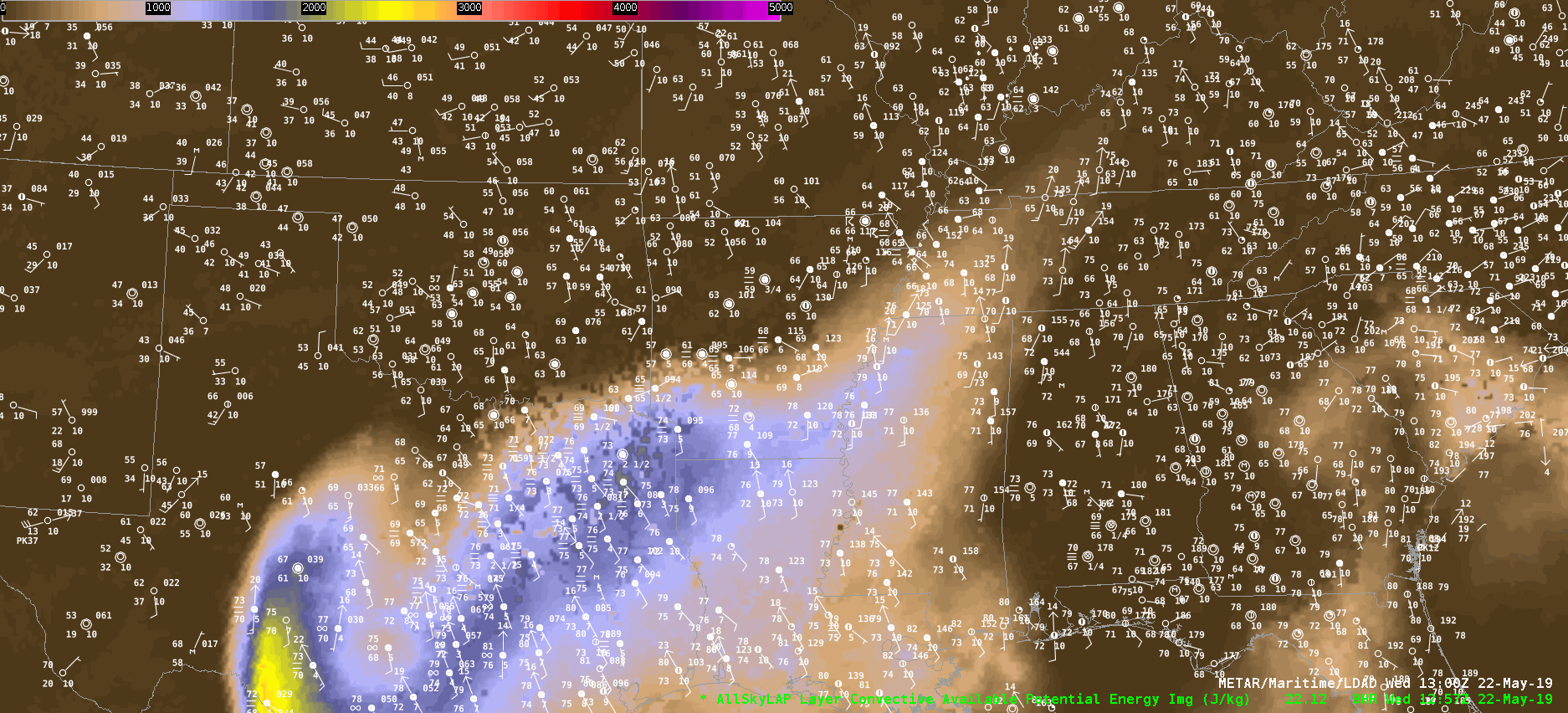The single-radar 0.5 degree AzShear (left pane) shows a coherent area of high values associated with the velocity couplet (bottom right pane). Compare this with the merged product (upper right pane). The merged product shows a few different maxima in AzShear which is probably associated with the multiple radars and beam heights that are used to make the product. The single radar product also tracks the velocity couplet better in real time and is not subject to the lag in the merged product due to the multi-radar processing.
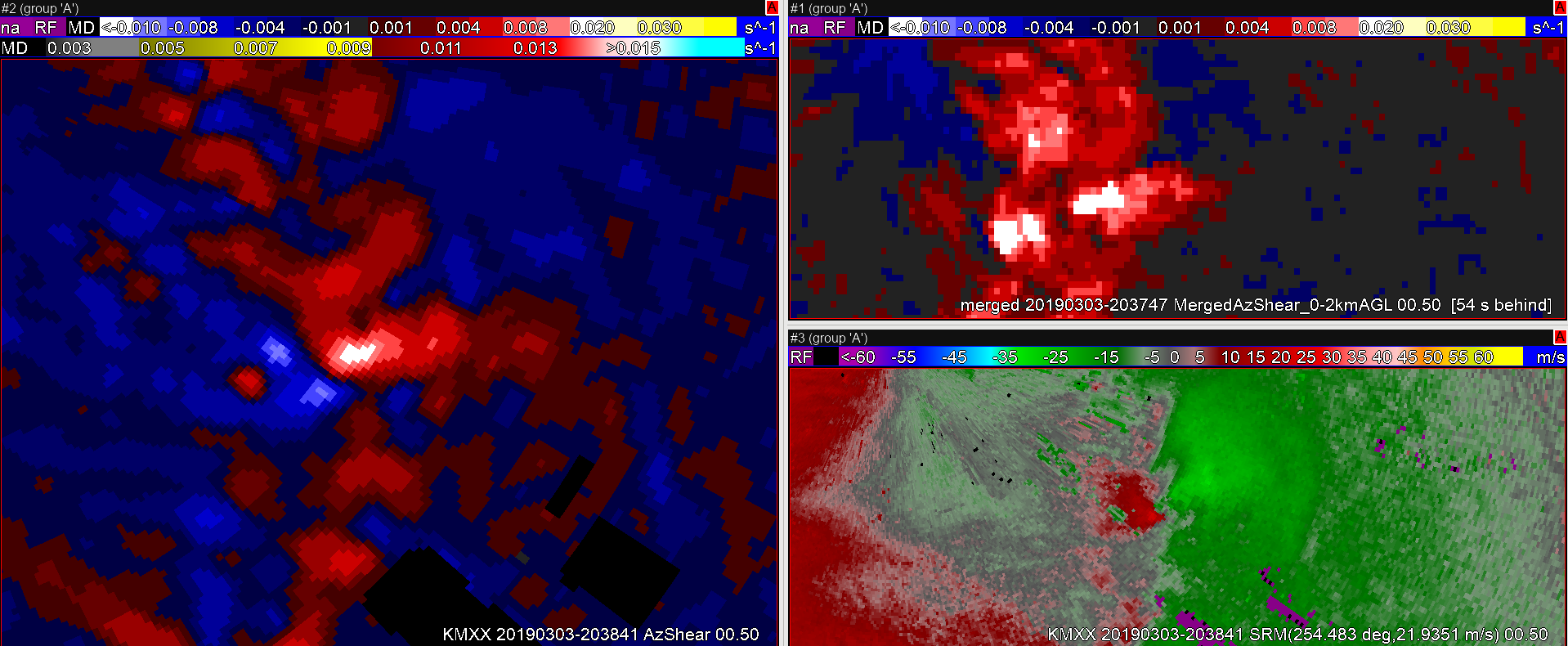
Ron Dayne

